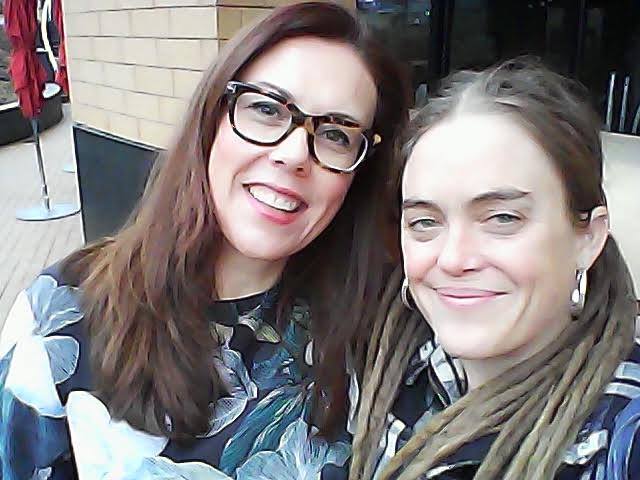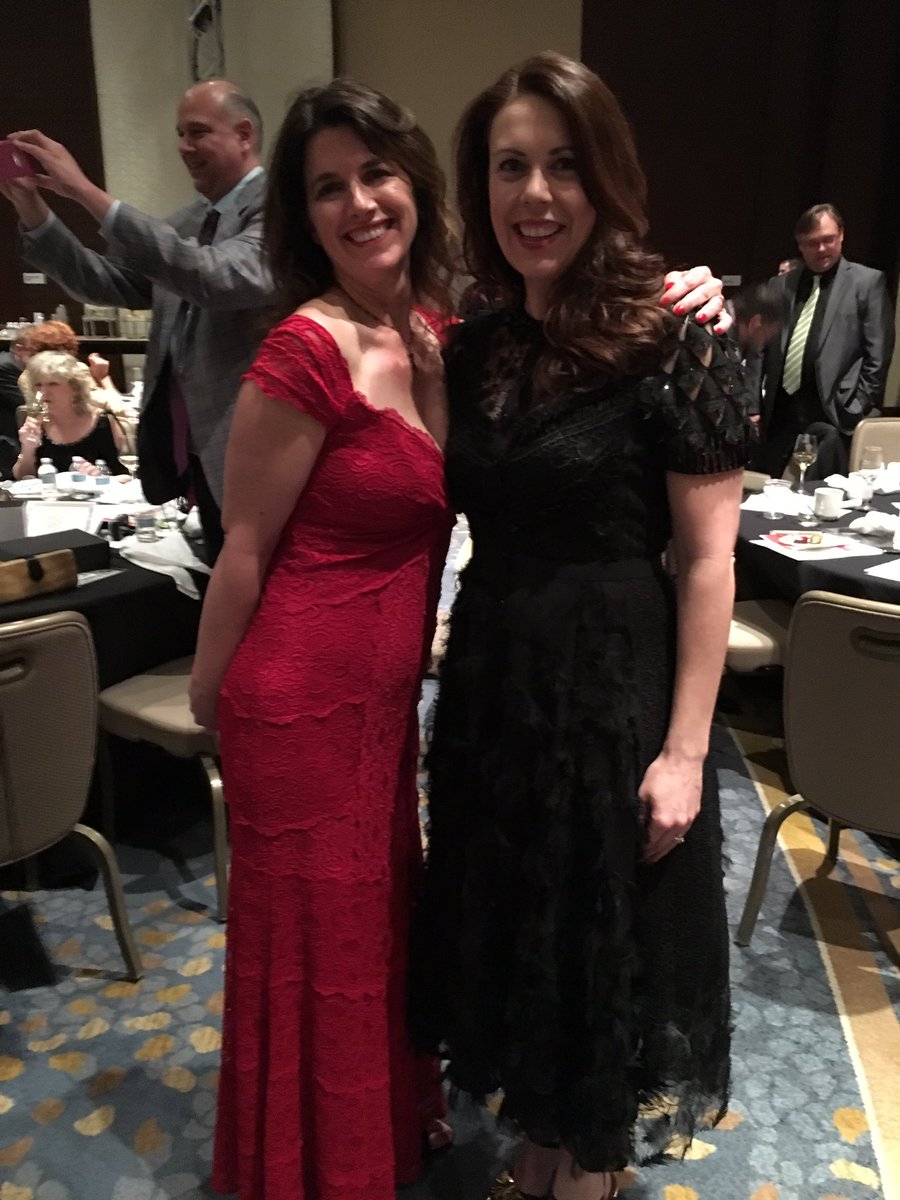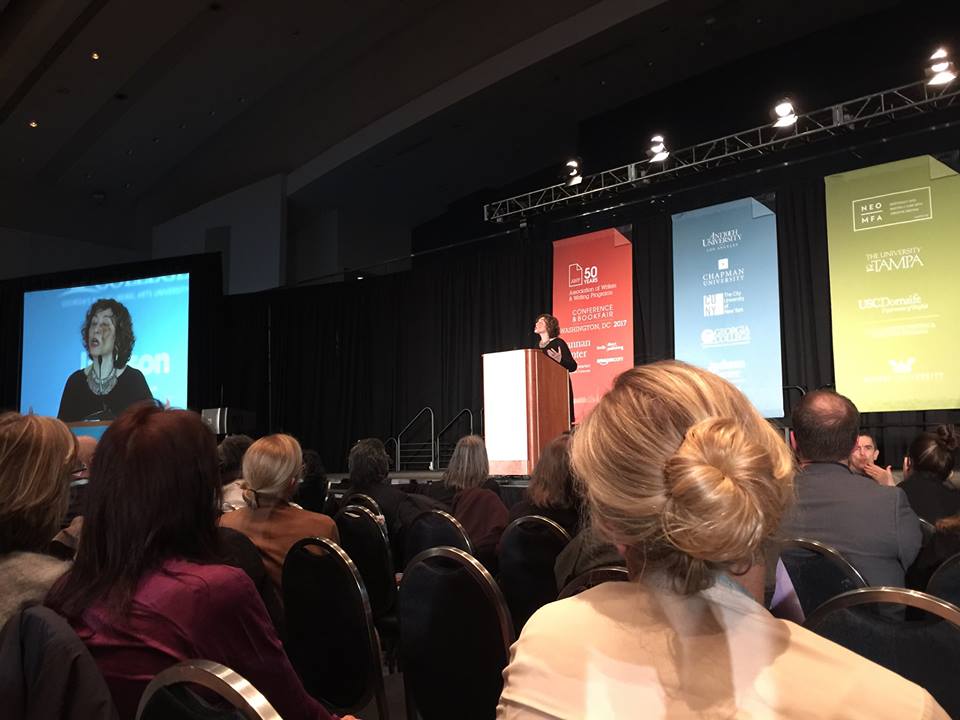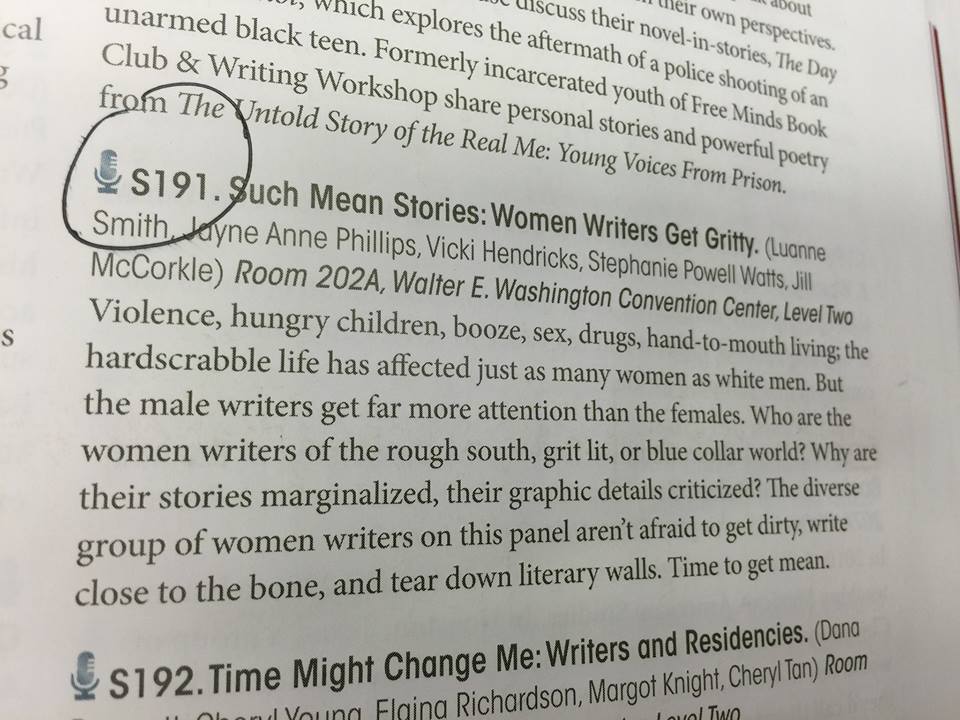The Association of Writers and Writing Programs 50th anniversary conference was incredible with more than 12,600 attendees, 550 events, and more than 800 exhibitors.
Erin Wood received a grant of $500 from the Arkansas Arts Council's Sally A. Williams Artist Fund to attend the conference. She went to many panels and readings, a few of which are highlighted below. It was Erin's first time to meet Scars: An Anthology contributors Jim Ferris and Chelsey Clammer in person after years of contact by email, and it was delightful to reconnect with Scars contributor and friend, Jill Christman.
SELECT PANELS ATTENDED
With 550 events, choosing what panels to attend is a terrible challenge. Then again, too much compelling stuff is a good problem to have! Click the link in each title to learn more about the panelists.
PUBLISHING DIVERSELY: Challenges and Successes
It's one thing to talk about diversity. It's something else to actually achieve it. Small press publishers, authors, and arts leaders will share their approaches to addressing, and achieving, diversity and representation in independent literary publishing.
THE VEIN OF JADE: What a single detail can reveal in nonfiction
"When the vein of jade/is revealed in the rock," Lu Chi writes in his classic The Art of Writing, "the whole mountain glistens." Likewise, a single detail can reveal the meaning and mystery of a scene, an essay, or a book. Practitioners of various nonfiction forms, from journalism to hybrid, each choose a particular detail from a well-regarded nonfiction and show how it becomes—by its context, its imagery, its power to—the vein of jade that allows the whole to glisten.
BODY OF WORK: Exploring disability, creativity, and inclusivity
What is the physical body’s relationship to the creative mind? Four writers with disabilities will discuss their writing lives, and how social progress and technology are transforming representations of the human body. What effect has this had on literature? Where do we read ourselves in fiction, nonfiction, and poetry? Our panelists will discuss whether or not literature is representing the current climate and how they have represented their own bodies in writing over time.
INVISIBLE SCAFFOLDS: The Writer-Editor Collaborative Process
Successful collaborations between writers and editors must involve mutual trust and respect in order to best serve manuscripts and the needs and vision of the presses that publish them. This panel of widely experienced editors, poets, fiction writers, and critics will explore the challenges and rewards of those collaborative processes that guide manuscripts from their initial acceptance, through various stages of revision, and ultimately, to publication.
KEYNOTE ADDRESS BY AZAR NAFISI (one of the more moving and motivating experiences of Erin's life)
Azar Nafisi is best known as the author of the national bestseller Reading Lolita in Tehran: A Memoir in Books, which spent over 117 weeks on The New York Times bestseller list. Her other work includes Anti-Terra: A Critical Study of Vladimir Nabokov’s Novels, the memoir Things I've Been Silent About: Memories of a Prodigal Daughter, The Republic of Imagination: America in Three Books, and the children’s book BiBi and the Green Voice. Among her numerous honors include the Prix du Meilleur Livre Étranger, a Nonfiction Book of the Year Award from Booksense, the Frederic W. Ness Book Award, the Latifeh Yarsheter Book Award, and the Persian Golden Lioness Award for literature. She has lectured and written extensively in English and Persian on the political implications of literature and culture, as well as the human rights of Iranian women and girls. Nafisi is currently a Fellow at the Foreign Policy Institute of Johns Hopkins University’s School of Advanced International Studies (SAIS) in Washington, DC, where she was a professor of aesthetics, culture, and literature, as well as was Director of The Dialogue Project & Cultural Conversations.
WHAT WRITERS OF COLOR WANT WHITE EDITORS TO KNOW
In 2017, what message does an all-white masthead send to writers of color? Beyond the content of their work, what issues must these writers contend with in publishing? Four writers of color and one white editor explore real and perceived tokenism, the pressure to change a story or voice to fit an editor’s racialized assumptions, the continued erasure of writers of color in the canon and awards systems, and the highs and lows of working with editors in the face of these and other challenges.
OUTSIDE THE UMBRELLA: Poetry and the Vantage Point of the Atypical (featuring Scars: An Anthology contributor Jim Ferris)
What does it mean to write poems from what disability studies scholar Simi Linton called “the vantage point of the atypical?” How do body/mind differences that fall outside the umbrella of normality serve as fonts for work by non-normative poets? These are some of the questions that four noted crip poets brought into a year-long correspondence in prose and poems. The poets share some of that work and discuss ways the differences called “disability” complicate and enrich their lives and work.
SUCH MEAN STORIES: Women Writers Get Gritty (featuring Jill McCorkle, of whom Erin is now a superfan)
Violence, hungry children, booze, sex, drugs, hand-to-mouth living; the hardscrabble life has affected just as many women as white men. But the male writers get far more attention than the females. Who are the women writers of the rough south, grit lit, or blue collar world? Why are their stories marginalized, their graphic details criticized? The diverse group of women writers on this panel aren’t afraid to get dirty, write close to the bone, and tear down literary walls. Time to get mean.
Erin was thrilled to discover Scars: An Anthology for sale at the AWP Bookfair's Disability Lit Consortium table!









